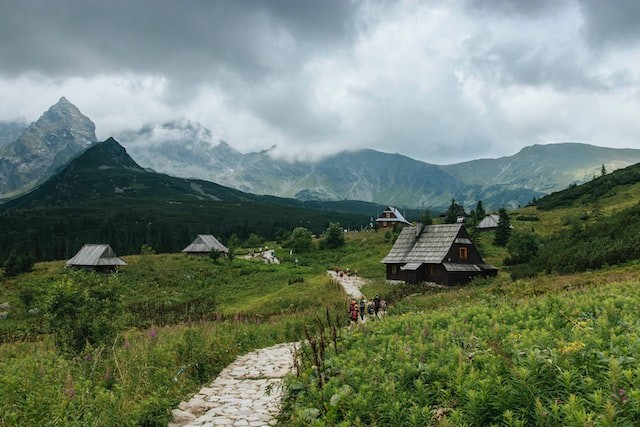On Monday, authorities were contacting some of the most isolated settlements in the United States to assess the need for food and water as well as the extent of damage caused by a big weekend storm that swamped communities along Alaska's wide western coast.
There have been no reports of injuries or deaths as a result of the big storm - the remains of Typhoon Merbok - as it moved north across the Bering Strait during the weekend.
However, when floodwaters receded, damage to houses, roads, and other infrastructure became apparent.
Damage Assessments Begin in Flooded Remote Alaska Villages
 (Photo : Alex Blokstra/Unsplash)
(Photo : Alex Blokstra/Unsplash)

The storm harmed over 21,000 individuals living in tiny settlements along a 1,000-mile (1,609-kilometer) stretch of Alaska's western coastline - a distance larger than the whole length of the California shoreline, as per US News
Many homes were flooded throughout the region, and some were blown off their foundations by the rushing waves carried by powerful winds.
Damage to highways, ports, seawalls, and water and sewage infrastructure was being assessed by officials.
According to Jeremy Zidek, a spokeswoman for the Alaska Department of Homeland Security and Emergency Management, most airports in the area were open, and officials were conducting either temporary or permanent repairs to the runways that still had concerns.
The storm remained stranded Monday in the Chukchi Sea in northwest Alaska, but it was swiftly weakening after influencing weather patterns as far afield as California at its peak.
Coastal flood advisories have been extended north of the Bering Strait because water will be sluggish to retreat in places such as Kotzebue, Kivalina, and Shishmaref, according to National Weather Service meteorologist Kaitlyn Lardeo.
Water surged 5.5 feet (1.68 meters) over average tide level in Shishmaref, while Kotzebue and Kivalina suffered lower surges but were remained without electricity Monday, she added.
Alaska Gov. Mike Dunleavy highlighted five areas hit by high water, floods, erosion, and electrical concerns on Sunday: Hooper Bay, Scammon Bay, Golovin, Newtok, and Nome. Nome, where one house drifted down a river until it was trapped by a bridge, was among those reporting road damage after tidal surges 11.1 feet (3.38 meters) over average were recorded.
Zidek stated that state authorities were actively monitoring those five, but they were also reaching out to every municipality in the region due to the multiple complaints of damage.
While some areas' needs may be bigger, he said, "we don't want to overlook those other places who have modest difficulties that still need to be rectified."
Read more: Severe Storms with Damaging Winds and Tornadoes to Hit the Central United States This Coming Week
significant flooding and cancellations of flights
According to reports from the city of Golovin, there was major flooding and destruction, which might have included old gasoline tanks, as per Accuweather.
As Friday turned into Saturday, Golovin Airport recorded both peaks sustained winds and gusts.
Wind gusts of 63 miles per hour were recorded shortly after midnight, with high sustained winds of 51 miles per hour recorded at 1 a.m. time zone just around 6:05 a.m.
During the severe weather, the weather station at Golovin Airport went down.
According to an NWS report, Kipnuk, Alaska, located on the southern section of the Alaskan west coast, saw winds of 45 mph with gusts of up to 80 mph.
The second-highest wind gust of the day occurred in the Tin City Airways Facilities Sector in Shishmaref, Alaska, at 8:49 a.m., with a 67 mph gust.
Shishmaref is one of the most western cities on the North American continent, located approximately 35 miles east of Russia's Big Diomede Island.
Ted Stevens Anchorage Airport reported many cancellations to storm-affected portions of the state.
On Saturday, two flights from Anchorage to Ralph Wien Memorial Airport in Kotzbue were canceled.
Flight Aware reported that a flight to Bethel and Nome has also been canceled.
According to Tribal Chief Edgar Tall, there have been multiple reports of damage across Alaska, including at least three homes being displaced off their foundations in Hooper Bay.
Floodwaters prompted 110 people to seek refuge in the Hooper Bay School.
Western Alaska is seeing one of the most severe storms in recent memory.
Alaska Senator Lisa Murkowski stated in a Twitter post that she and her staff are in constant touch with local, state, and federal officials, and she is ready to do whatever she can do at the federal level to help all those affected.
Related article: Developing Storm System to Bring Severe Weather in the Eastern Half of the United States
© 2024 NatureWorldNews.com All rights reserved. Do not reproduce without permission.





